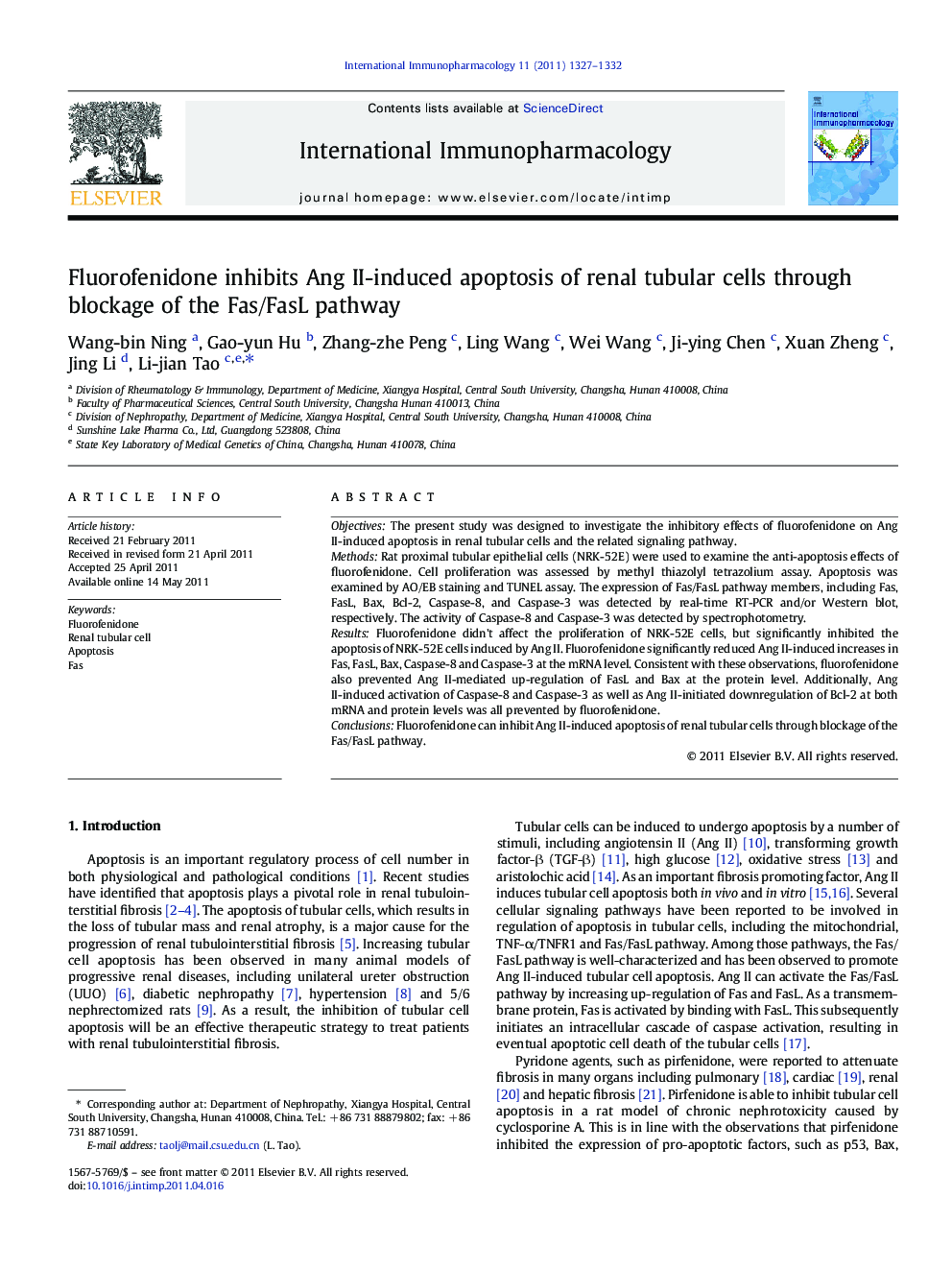| Article ID | Journal | Published Year | Pages | File Type |
|---|---|---|---|---|
| 5833891 | International Immunopharmacology | 2011 | 6 Pages |
ObjectivesThe present study was designed to investigate the inhibitory effects of fluorofenidone on Ang II-induced apoptosis in renal tubular cells and the related signaling pathway.MethodsRat proximal tubular epithelial cells (NRK-52E) were used to examine the anti-apoptosis effects of fluorofenidone. Cell proliferation was assessed by methyl thiazolyl tetrazolium assay. Apoptosis was examined by AO/EB staining and TUNEL assay. The expression of Fas/FasL pathway members, including Fas, FasL, Bax, Bcl-2, Caspase-8, and Caspase-3 was detected by real-time RT-PCR and/or Western blot, respectively. The activity of Caspase-8 and Caspase-3 was detected by spectrophotometry.ResultsFluorofenidone didn't affect the proliferation of NRK-52E cells, but significantly inhibited the apoptosis of NRK-52E cells induced by Ang II. Fluorofenidone significantly reduced Ang II-induced increases in Fas, FasL, Bax, Caspase-8 and Caspase-3 at the mRNA level. Consistent with these observations, fluorofenidone also prevented Ang II-mediated up-regulation of FasL and Bax at the protein level. Additionally, Ang II-induced activation of Caspase-8 and Caspase-3 as well as Ang II-initiated downregulation of Bcl-2 at both mRNA and protein levels was all prevented by fluorofenidone.ConclusionsFluorofenidone can inhibit Ang II-induced apoptosis of renal tubular cells through blockage of the Fas/FasL pathway.
Research highlights⺠Ang II induces NRK-52E cells undergo apoptosis by activation of the Fas/FasL pathway. ⺠Fluorofenidone inhibits Ang II-induced apoptosis in renal tubular cells. ⺠Fluorofenidone inhibits activation of the Fas/FasL pathway in renal tubular cells.
